A Pilgrim’s Path: Discovering the Rich Heritage of Guoqing Temple
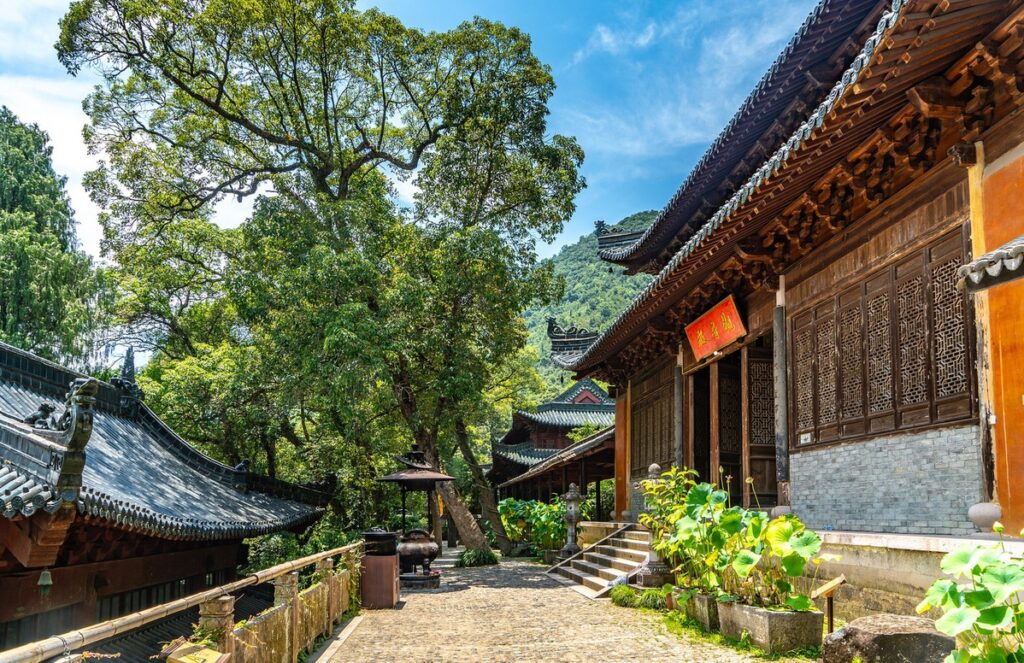
An Essential Guide to Visiting Guoqing Temple
Nestled amidst the serene landscapes of Tiantai County in Zhejiang Province, Guoqing Temple (国清寺) stands as a testament to the rich spiritual heritage of China. This ancient monastery, over 1,500 years old, is revered as the birthplace of the Chinese Tendai sect of Buddhism, making it a significant pilgrimage site for both devout Buddhists and curious travelers alike. As you wander through its tranquil gardens and historic halls, the temple’s vibrant atmosphere comes alive with the presence of monks, acolytes, and lay believers engaged in the pursuit of enlightenment.
Unlike many temples that feel more like relics of the past, Guoqing Temple thrives as a living sanctuary of faith and learning. It offers visitors a unique opportunity to observe authentic Buddhist practices in action, providing a refreshing contrast to the often commercialized nature of tourist attractions. With no entrance fee and no pressure to purchase souvenirs, you can immerse yourself fully in the peaceful ambiance, taking your time to appreciate the intricate architecture and lush surroundings.
Whether you’re seeking spiritual solace or simply a moment of quiet reflection, Guoqing Temple invites you to experience its timeless beauty. From the gentle rustling of leaves in the expansive gardens to the distant chants of monks during prayer, every corner of this sacred site tells a story that transcends centuries. Prepare to embark on a journey of discovery, as you delve into the heart of Buddhism in one of its most hallowed grounds.
In This Guide
- An Essential Guide to Visiting Guoqing Temple
- The Rich History and Legends of Guoqing Temple
- Main Highlights: What You Absolutely Can’t Miss
- Planning Your Visit: A Practical Guide
- Tickets: Prices, Booking, and Tips
- How to Get There: A Complete Transportation Guide
- Local Cuisine and Accommodation Nearby
- Frequently Asked Questions
- Final Thoughts on Your Trip
The Rich History and Legends of Guoqing Temple
Nestled in the serene mountains of Tiantai County, Guoqing Temple (国清寺) stands as a testament to over 1,500 years of rich history and spiritual significance. Renowned as the birthplace of the Chinese Tendai sect of Buddhism, this ancient monastery has witnessed the evolution of Buddhist thought and practice through the ages, making it a must-visit destination for those intrigued by religious history and culture.
The temple’s origins trace back to the Sui Dynasty (581-618 AD), when it was initially established by the eminent monk Zhiyi, who is credited with founding the Tendai school. This sect emphasizes the integration of various Buddhist teachings, promoting a comprehensive approach to enlightenment that resonates with many practitioners today. Guoqing Temple became a hub for scholarly study and spiritual development, attracting monks and laypeople eager to delve into the teachings of Buddhism.
Throughout the centuries, Guoqing Temple has undergone numerous renovations and restorations, reflecting the architectural styles of different dynasties. Visitors can admire the intricate woodwork and vibrant murals that adorn the temple’s halls, each telling a story that adds to the tapestry of its history. Despite the passage of time, Guoqing Temple remains a “living” temple, where monks continue to practice and teach, creating an atmosphere of devotion that is palpable as you wander its peaceful grounds.
One of the temple’s most celebrated features is its connection to the legendary monk Saicho, who is believed to have studied here before bringing Tendai Buddhism to Japan in the 8th century. This cross-cultural exchange underlines Guoqing Temple’s significance not just within China, but also in the broader context of Buddhist history. The teachings that emerged from this sacred site have influenced generations of practitioners, shaping the spiritual landscape of both China and Japan.
Legends abound within the temple’s walls, including tales of miraculous occurrences attributed to the divine presence believed to reside here. Visitors often recount experiences of tranquility and inspiration, as if the very air is imbued with the wisdom of centuries. The temple’s gardens, filled with ancient trees and serene pathways, invite contemplation and reflection, making it a perfect sanctuary from the hustle and bustle of modern life.
As you explore Guoqing Temple, take a moment to appreciate not only its historical significance but also the legends that breathe life into this sacred space. It serves as a reminder of the enduring power of faith and the rich tapestry of Buddhist heritage that continues to inspire travelers and pilgrims alike.
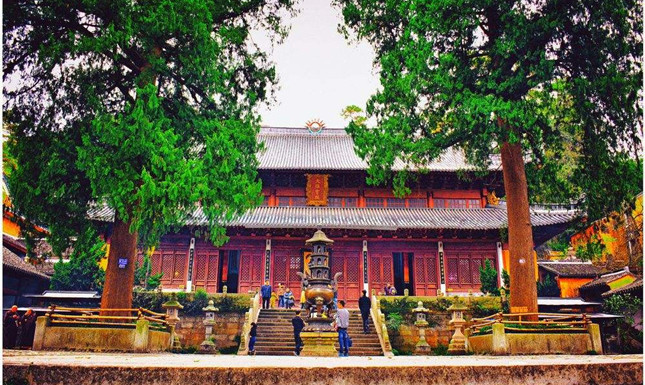
Guoqing Temple.
Main Highlights: What You Absolutely Can’t Miss
When visiting Guoqing Temple, a journey steeped in history and spirituality awaits you. Nestled in the serene landscapes of Tiantai County, Zhejiang Province, this 1,500-year-old temple is not only the birthplace of the Chinese Tendai sect of Buddhism but also a living testament to the faith and practices that have flourished here for centuries. Here are the main highlights you absolutely can’t miss:
1. The Historic Architecture
As you enter the temple grounds, take a moment to admire the stunning architecture that reflects traditional Chinese design. The intricate wooden structures, adorned with vibrant colors and carvings, invite you to explore further. Don’t miss the main hall, which showcases the essence of ancient craftsmanship and serves as a focal point for worship and meditation.
2. The Tranquil Gardens
Wander through the lush gardens that surround the temple. These peaceful landscapes provide a perfect backdrop for reflection. The carefully tended paths, serene ponds, and blooming flowers create an atmosphere of tranquility, allowing you to connect with nature and embrace the calm that envelops the temple.
3. Engage with the Living Tradition
Unlike many other temples that feel more like museums, Guoqing Temple is a vibrant center of worship. Observe the monks and lay practitioners engaged in their daily rituals and practices. If you’re fortunate, you may even witness a Buddhist ceremony or participate in a meditation session, enriching your understanding of the living traditions of Buddhism.
4. The Cultural Significance
Guoqing Temple holds significant cultural importance as the cradle of the Tiantai school of Buddhism, founded by the monk Zhiyi. This sect emphasizes the integration of various Buddhist teachings, and you can explore its profound influence on Chinese Buddhism. Look for inscriptions and artifacts that tell the story of this rich heritage.
5. The Scenic Surroundings
After immersing yourself in the temple’s spiritual ambiance, take time to explore the surrounding natural beauty. The temple is located near the stunning Mt. Tiantai Scenic Area, where hiking trails offer breathtaking views of the mountains and valleys. Plan to spend some time enjoying the outdoors, as it complements the spiritual experience of the temple.
6. Free Entry and Accessibility
One of the most appealing aspects of Guoqing Temple is that it does not charge an entrance fee. This accessibility allows travelers of all backgrounds to experience its beauty and serenity without financial barriers. It’s a welcoming space for anyone interested in spirituality, history, or simply enjoying a peaceful retreat.
7. Visit Local Eateries
After your visit, consider exploring nearby dining options to sample local Zhejiang cuisine. Several restaurants within a short distance offer delicious dishes, providing a perfect end to your spiritual journey. Engage with the locals and savor the flavors of the region, enhancing your overall experience.
Conclusion
Guoqing Temple is not just a destination; it’s an opportunity to step into a living piece of history and spirituality. Whether you are a devout practitioner or simply a curious traveler, the temple’s serene environment, rich cultural significance, and beautiful architecture ensure that your visit will be memorable and meaningful. Don’t miss the chance to experience this unique gem in Tiantai County!
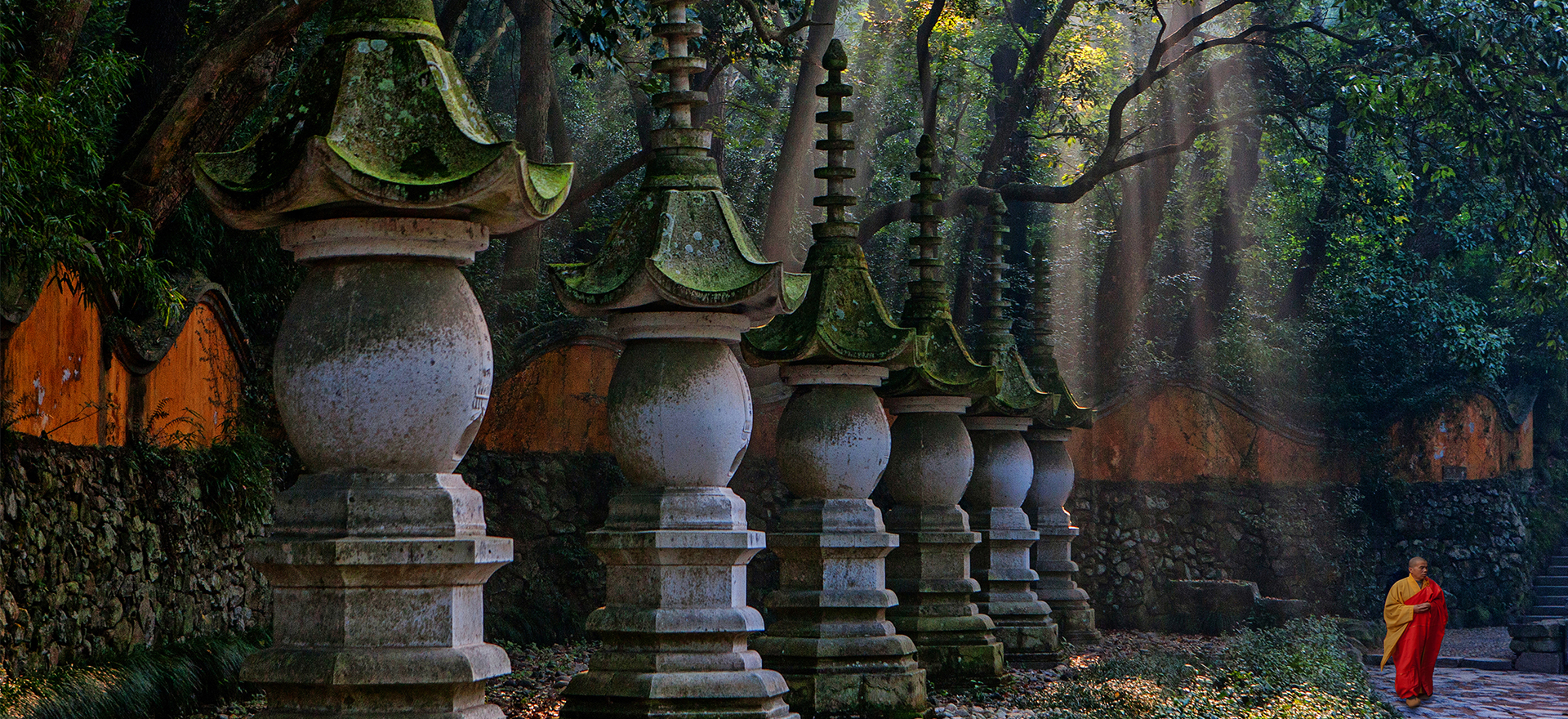
Guoqing Temple.
Planning Your Visit: A Practical Guide
Visiting Guoqing Temple is a unique opportunity to immerse yourself in the rich history and spiritual ambiance of one of China’s most significant Buddhist sites. Nestled in Tiantai County, Zhejiang Province, this ancient temple is renowned as the birthplace of the Chinese Tendai sect of Buddhism. Here’s how to plan your visit for a rewarding experience.
Getting There
Location:
Guoqing Temple is situated on Guoqing Road, Tiantai County, Zhejiang Province, China.
Transportation:
The nearest train station is Tiantaisan Station on the Gao Railway. From there, a taxi ride will take approximately 20 minutes to reach the temple. If you’re traveling from the city center or nearby towns, consider hiring a local taxi or using a ride-hailing app for convenience.
Opening Hours
The temple is open daily from 7:55 AM to 4:33 PM. Given its hours, plan to arrive early to enjoy the serene atmosphere before the crowds arrive.
Admission
One of the appealing aspects of Guoqing Temple is that there is no entrance fee. Visitors can explore the grounds freely without any pressure to make purchases or donations, allowing for a more genuine experience.
What to Expect
Guoqing Temple is not merely a historical site; it is a “living” temple that continues to serve as a place of worship and study. Here, you will likely encounter monks, acolytes, and lay believers engaged in various activities, from meditation to ceremonial practices. This interaction provides a glimpse into the ongoing traditions of Chinese Buddhism.
The temple complex is approximately 1,500 years old and features a serene landscape that encourages reflection and peace. Take your time wandering the gardens and absorbing the tranquil environment.
Nearby Attractions
After your visit, consider exploring nearby attractions:
- Mt. Tiantai Scenic Area: Approximately 2.7 miles away, this stunning natural area offers hiking trails and breathtaking views.
- Chicheng Mountain: Located just 0.9 miles from the temple, this mountain is perfect for an invigorating hike.
- Local Restaurants: Enjoy authentic Zhejiang cuisine at nearby eateries like Jin San Restaurant and Shu Yuan Hotpot, both just a short drive away.
Tips for Your Visit
- Dress Appropriately: As a place of worship, it’s respectful to wear modest clothing. Comfortable shoes are also advisable, as you’ll likely be walking on uneven surfaces.
- Be Mindful: Keep noise to a minimum, especially in prayer areas. Observe any rituals with respect, and feel free to ask questions if you encounter monks or practitioners.
- Stay Hydrated: Bring a water bottle, especially if you plan to hike in the surrounding areas.
Conclusion
A visit to Guoqing Temple is not just a journey through history but also a chance to engage with the spiritual heart of the Tendai sect of Buddhism. Whether you’re a history enthusiast, a spiritual seeker, or simply in search of tranquility, this temple offers an enriching experience that resonates long after you leave. Enjoy your visit and the peaceful moments you’ll surely encounter at this remarkable site.

Guoqing Temple.
Tickets: Prices, Booking, and Tips
Visiting Guoqing Temple offers a unique opportunity to explore one of China’s most significant Buddhist sites without the burden of entrance fees. This historical temple, renowned as the birthplace of the Tendai sect, invites travelers to immerse themselves in its serene atmosphere and rich cultural heritage.
Entrance Fee
One of the most appealing aspects of Guoqing Temple is that there is no entrance fee required to access the temple grounds. Visitors are free to wander through the expansive complex, experiencing the tranquility and spiritual ambiance without any cost. This makes it an excellent option for budget-conscious travelers seeking meaningful cultural experiences.
Booking and Access
While no prior booking is necessary to visit the temple, planning your visit during the early morning or late afternoon can enhance your experience. These times tend to be quieter, allowing you to fully appreciate the peaceful surroundings and engage with the resident monks and practitioners.
To reach Guoqing Temple, the nearest railway station is Tiantaisan Station, located about a 20-minute taxi ride away. Regular taxis are available from the station, making transportation straightforward. Alternatively, local buses are also an option for those looking for a more economical way to travel.
Tips for Visiting
-
Dress Appropriately: As Guoqing Temple is an active place of worship, modest dress is recommended. This shows respect for the sacred environment and the beliefs of those who practice Buddhism here.
-
Explore the Grounds: Take your time to wander through the temple grounds. The architecture and gardens are stunning, and you’ll find several spots perfect for reflection and photography.
-
Engage with the Community: If you’re interested in learning more about Buddhism, consider engaging with the monks or lay practitioners. Many are open to sharing their knowledge and experiences, providing deep insights into the practices and teachings of the Tendai sect.
-
Timing Your Visit: The temple is open daily from 7:55 AM to 4:33 PM. Plan your visit accordingly to ensure you have ample time to explore and absorb the temple’s atmosphere.
In summary, a visit to Guoqing Temple is not only free but also enriching. With thoughtful preparation and a respectful mindset, you can enjoy an unforgettable experience at this historic site in Tiantai County.
How to Get There: A Complete Transportation Guide
Reaching Guoqing Temple in Tiantai County, Taizhou, is a journey that combines convenience with a touch of adventure. This majestic site, known as the birthplace of the Chinese Tendai sect of Buddhism, is steeped in history and tranquility, making it worth the effort to visit.
Getting to Guoqing Temple
By Train
The nearest railway station is Tiantaisan Station, which is situated along the Gao Railway line. If you’re traveling from major cities like Hangzhou or Shanghai, you can take a high-speed train to Taizhou. From Taizhou, head to Tiantaisan Station, which is about 20 minutes away from Guoqing Temple.
By Taxi
Once you arrive at Tiantaisan Station, the most convenient way to reach the temple is by taxi. Taxis are readily available outside the station. The ride to Guoqing Temple takes approximately 20 minutes. Make sure to have the temple’s name written in Chinese (国清寺) to show the driver, as this will ensure there are no miscommunications.
By Bus
For budget-conscious travelers, there are local buses that connect Taizhou to Tiantai County. Buses are frequent, but you’ll need to check the local schedules for times. Once you arrive in Tiantai County, you can either take a taxi or walk to the temple, depending on your preference and energy level.
By Car
If you’re driving, the temple is easily accessible via major highways. Look for signs indicating Tiantai County and follow the directions to Guoqing Road. There is parking available near the temple, making it a convenient option for those exploring the region by car.
Local Transportation
Once you arrive at Guoqing Temple, the serene grounds are perfect for exploration on foot. The temple complex boasts beautiful gardens and peaceful pathways, inviting visitors to immerse themselves in its tranquil atmosphere.
Useful Tips
- Language: While some locals may speak basic English, it’s beneficial to have a translation app or a phrasebook handy, especially when navigating transportation options.
- Cash: Keep some cash on hand, as not all transportation methods may accept credit cards.
- Best Time to Visit: Guoqing Temple is open daily from 7:55 AM to 4:33 PM. Visiting early in the morning or later in the afternoon can help you avoid crowds and enjoy a more peaceful experience.
With its rich history and serene ambiance, Guoqing Temple is a must-visit destination for anyone traveling through Zhejiang Province. Whether you arrive by train, taxi, or bus, the journey to this sacred site is sure to be a memorable part of your adventure in China.
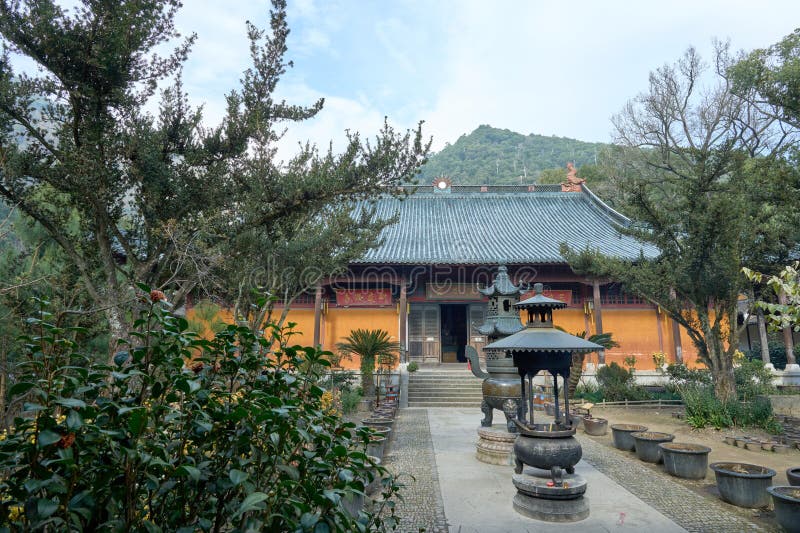
Guoqing Temple.
Local Cuisine and Accommodation Nearby
Nestled in the serene landscapes of Tiantai County, Guoqing Temple not only offers a profound spiritual experience but also serves as a gateway to discover local culinary delights and comfortable accommodations.
Culinary Delights
After exploring the tranquil grounds of Guoqing Temple, treat your taste buds to some local flavors. Here are a few dining options:
-
Jin TengYun Restaurant (1.6 miles away): Specializing in authentic Zhejiang cuisine, this restaurant features a variety of dishes that highlight the region’s flavors. Be sure to try their signature fish dishes, which are locally sourced and prepared with traditional methods.
-
BeiDouXing NongJia ShanZhuang (0.9 miles away): This charming eatery offers a homestyle dining experience with a menu that includes farm-fresh ingredients. Enjoy classic Chinese dishes in a rustic setting that reflects the simplicity and beauty of rural life.
-
MeiWei ShaoKao ZhiYuan (1.7 miles away): For those craving a casual meal, this barbecue restaurant serves up delicious grilled meats and vegetables. It’s a perfect spot to relax after a day of sightseeing with friends or family.
-
ChuLiuXiang Yu Zhuang (1.7 miles away): Renowned for its seafood, this restaurant is a must-visit for seafood lovers. The freshness of their dishes is a highlight, making it a favorite among both locals and tourists.
Comfortable Stays
When it comes to accommodation, Tiantai County offers a range of options catering to various preferences and budgets. Here are a couple of recommendations:
-
Victory Hotel: This hotel is known for its western amenities and comfortable rooms, making it a great choice for international travelers. Its location is convenient, with easy access to local attractions, including Guoqing Temple.
-
Tiantai Mountain Resort: For a more immersive experience in nature, consider this resort. Surrounded by picturesque mountains and lush greenery, it offers a peaceful retreat with modern comforts. Enjoy scenic views and rejuvenate your spirit after your temple visit.
Whether you are looking to indulge in local cuisine or find a comfortable place to unwind, the area surrounding Guoqing Temple has something to offer every traveler. Enjoy your journey through this culturally rich and spiritually significant part of China!
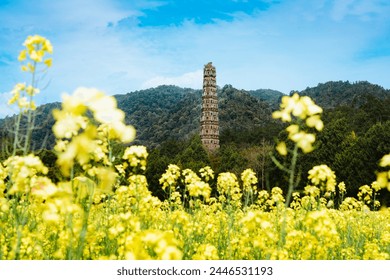
Guoqing Temple.
Frequently Asked Questions
Frequently Asked Questions about Guoqing Temple (国清寺)
-
What is Guoqing Temple known for?
Guoqing Temple is recognized as the birthplace of the Chinese Tendai sect of Buddhism. With a history spanning over 1,500 years, it serves as an active monastery, providing a unique glimpse into the living traditions of Chinese Buddhism. -
Is there an entrance fee to visit Guoqing Temple?
No, visitors can explore Guoqing Temple without an entrance fee. The temple welcomes all who wish to walk its grounds and experience its serene atmosphere without the pressure of purchasing tickets or souvenirs. -
What are the opening hours for Guoqing Temple?
Guoqing Temple is open daily from 7:55 AM to 4:33 PM. If you’re planning a visit, it’s best to arrive early to enjoy the peaceful surroundings before larger crowds arrive. -
How do I get to Guoqing Temple?
To reach Guoqing Temple, take a taxi from Tiantaisan Station on the Gao Railway, which is about a 20-minute ride away. The temple is located on Guoqing Road in Tiantai County, making it relatively easy to access. -
Are there any guided tours available?
While there may not be formal guided tours, many travelers find that exploring the temple grounds independently allows for a more personal experience. Local monks and acolytes are usually present and may be able to share insights about the temple’s history and significance if approached respectfully. -
What should I wear when visiting the temple?
Visitors are encouraged to dress modestly and respectfully. Comfortable clothing is advisable, but it’s best to avoid revealing attire. Wearing shoes that are easy to remove is also a good idea, as some areas may require you to take off your shoes. -
Are there any nearby attractions or restaurants?
Yes! Guoqing Temple is surrounded by beautiful natural scenery and other attractions such as the Mt. Tiantai Scenic Area. You can also find several local restaurants within a few miles that offer a taste of authentic Zhejiang cuisine. -
Can I participate in any activities at the temple?
While visiting, you might witness daily rituals and practices undertaken by the monks. Engaging respectfully is encouraged, but it’s best to observe quietly. If you’re interested in deeper involvement, consider asking about meditation sessions or teachings that may be open to visitors.
Final Thoughts on Your Trip
As your journey comes to an end at the serene Guoqing Temple, take a moment to reflect on the rich tapestry of history, spirituality, and tranquility that this sacred site offers. Nestled within the lush landscapes of Tiantai County, this living temple is not merely a relic of the past but a vibrant center of the Tendai Buddhist tradition, alive with the sounds of prayer, contemplation, and community.
Walking through the temple grounds, you may have felt the gentle whispers of ancient wisdom and the peace that comes from centuries of devotion. Whether you were captivated by the intricate architecture or found solace in the quiet gardens, Guoqing Temple invites you to connect with something greater than yourself. It’s a place where the hustle and bustle of modern life fades away, allowing you to immerse yourself in the present moment.
As you prepare to leave, carry with you the essence of your experience—an appreciation for the beauty of impermanence, the importance of mindfulness, and the power of historical roots that continue to shape the spiritual landscape of China. May your memories of Guoqing Temple inspire you to seek out similar pockets of peace and reflection in your future travels. Safe journeys ahead!